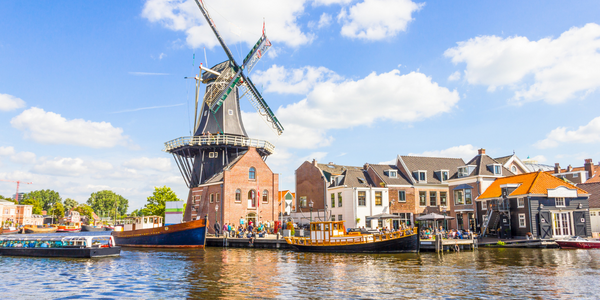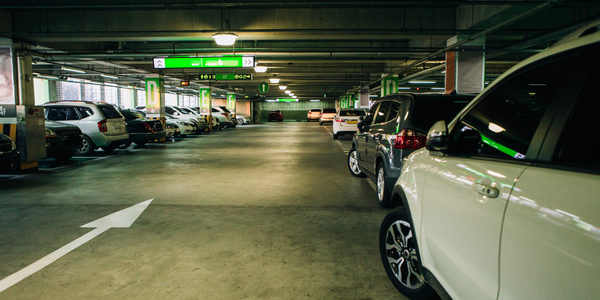Technology Category
- Functional Applications - Enterprise Asset Management Systems (EAM)
- Infrastructure as a Service (IaaS) - Private Cloud
Applicable Industries
- Cities & Municipalities
- Education
Use Cases
- Asset Health Management (AHM)
- Asset Lifecycle Management
Services
- System Integration
About The Customer
Conseil Scolaire Catholique de District des Grandes Rivières (CSCDGR) is a private school system based in Ontario, Canada. It serves over 6,200 elementary and high school students daily across 29 elementary schools, 8 high schools, and 3 alternative education centers. The school system spans an area of approximately 25,000 square kilometers. With a large number of assets being transferred between schools and cities, CSCDGR was in need of an efficient and effective asset management solution.
The Challenge
Conseil Scolaire Catholique de District des Grandes Rivières (CSCDGR), a private school system based in Ontario, Canada, was facing a significant challenge in tracking their educational assets. With over 6,200 students attending their 29 elementary schools, 8 high schools, and 3 alternative education centers spread across an area of approximately 25,000 square kilometers, the school system had a large number of assets being transferred from school to school and between multiple cities. Their existing method of using an Excel spreadsheet to track assets, particularly iPads, was proving to be inefficient and inadequate. The school system was struggling to keep track of what equipment they had, where it was located, and what needed to be replaced or updated on a regular basis.
The Solution
CSCDGR implemented Asset Panda, a barcoding solution, just over a year ago to improve their asset management. The easy-to-use platform allows the school system to easily look up serial numbers of assets and determine their location. The barcode scanning feature has been particularly beneficial, enabling the school system to efficiently track their assets. The school system is currently focusing on getting all of their assets barcoded and integrated into the Asset Panda system. The mobile app has been especially useful in this process. While they are not yet using Asset Panda to its full potential, they plan to delve deeper into the system's capabilities in the future. In addition, Asset Panda's customer service has been highly responsive to the school system's needs, implementing requested changes to the mobile app to ensure the system aligns with their requirements.
Operational Impact
Quantitative Benefit

Case Study missing?
Start adding your own!
Register with your work email and create a new case study profile for your business.
Related Case Studies.

Case Study
Turning A Stadium Into A Smart Building
Honeywell created what it called the “intelligent system” for the National Stadium in Beijing, China, turning the venue for the opening and closing events at the 2008 Summer Olympics into a “smart building.” Designed by highly controversial artist Ai Weiwei, the “Bird’s Nest” remains one of the most impressive feats of stadium architecture in the world. The 250,000 square meter structure housed more than 100,000 athletes and spectators at a time. To accommodate such capacity, China turned to Honeywell’s EBI Integrated Building Management System to create an integrated “intelligent system” for improved building security, safety and energy efficiency.
.png)
Case Study
Smart Street Light Network (Copenhagen)
Key stakeholders are taking a comprehensive approach to rethinking smart city innovation. City leaders have collaborated through partnerships involving government, research institutions and solution providers. The Copenhagen Solutions Lab is one of the leading organizations at the forefront of this movement. By bringing together manufacturers with municipal buyers, the Copenhagen Solutions Lab has catalyzed the development and deployment of next-generation smart city innovations. Copenhagen is leveraging this unique approach to accelerate the implementation of smart city solutions. One of the primary focus areas is LED street lighting.

Case Study
Buoy Status Monitoring with LoRa
The Netherlands are well-known for their inland waterways, canals, sluices and of course port activities. The Dutch Ministry of Infrastructure indicates that there are thousands of buoys and fixed items in and near water environments that would profit from IoT monitoring. One of the problems with buoys for example, is that they get hit by ships and the anchor cable breaks. Without connectivity, it takes quite some time to find out that something has happened with that buoy. Not to mention the costs of renting a boat to go to the buoy to fix it. Another important issue, is that there is no real-time monitoring of the buoys at this moment. Only by physically visiting the object on the water, one gains insight in its status.

Case Study
Barcelona Case Study
Barcelona’s heavy traffic and its associated high levels of pollution were the primary factors that motivated some companies and universities to work on strategies for improving traffic in the city centre. Bitcarrier is one of the technologies involved in the In4Mo Project, whose main objective is to develop the applications that form the core of smart mobility, one of the fundamental pillars of the smart city concept.

Case Study
China Mobile Smart Parking
Smart Parking, powered by NB-IoT technology, is making it easier for drivers to find free parking spots. Cities can better manage their parking assets and maximize the revenue available to them as a result. Drivers searching for parking create congestion and pollution by circling and hunting for available parking. Smart Parking services are able to significantly ease these problems by guiding a driver directly to a parking space.








